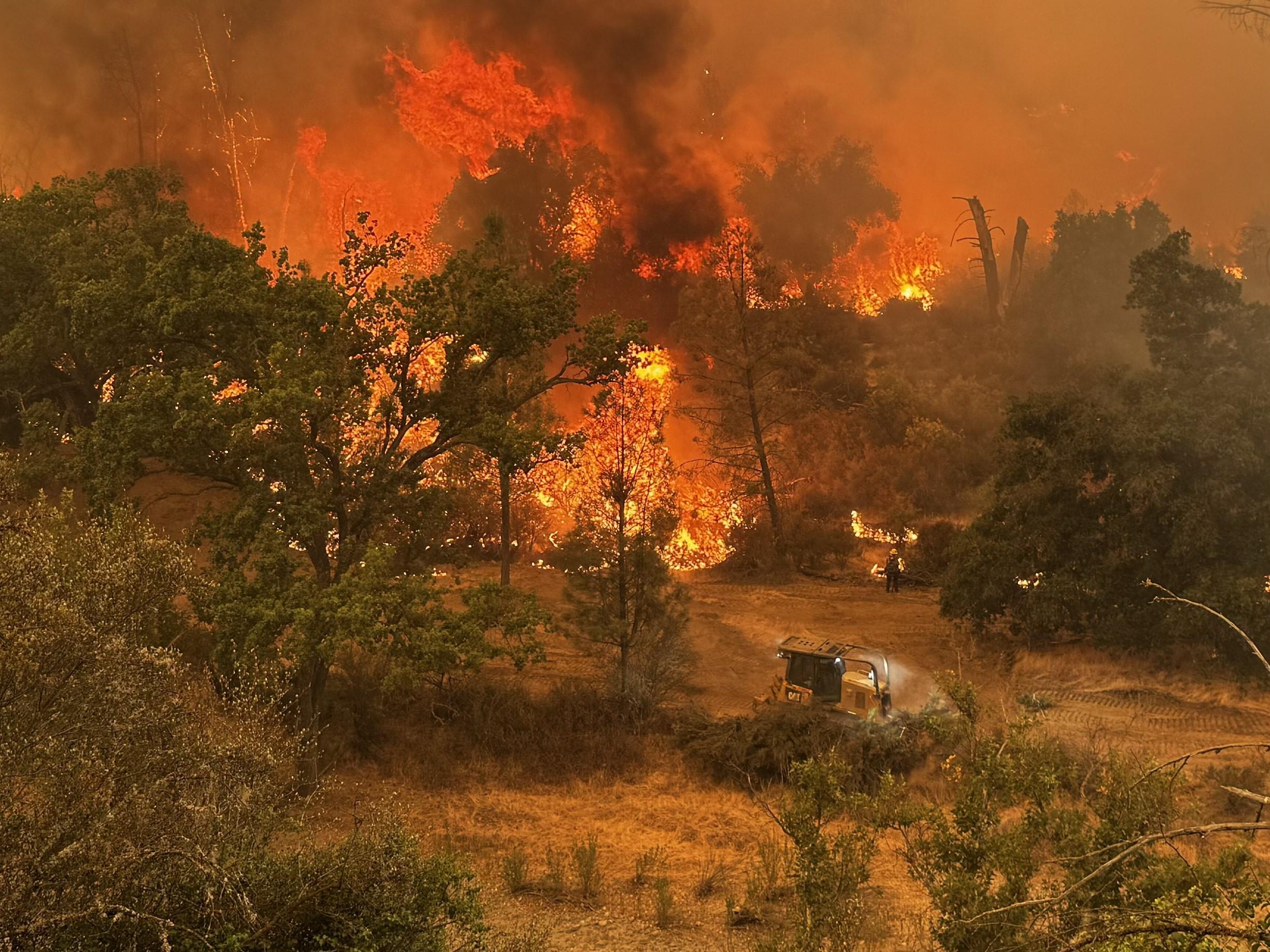What we’re watching: Weekly disaster update, August 11

We know all too well that disaster can strike anytime, anywhere in the world. Some disasters make headlines; others do not. Here at the Center for Disaster Philanthropy (CDP), we monitor the status of disasters worldwide and compile a list of the ones we’re tracking weekly, along with relevant disaster-related media coverage.
Here’s what we’re watching for the week of Aug. 11, 2025.
New or Emerging Disasters
Flooding – Multiple locations: Recently, multiple countries and communities worldwide have faced flooding, including the United States, India, Saudi Arabia, Pakistan and Japan.
- India: Beginning on Aug. 5, rescuers used helicopters to help people stranded by flood waters in the Himalayan state of Uttarakhand. A major landslide and flash flood buried the town of Dharali in mud and rock, with debris reaching the roofs of homes in seconds. Ongoing landslides and floods have made rescue and recovery challenging. The death toll reached six people, with dozens missing. The cause of the landslide is under debate since, even though it is monsoon season, the rain was not heavy. Researchers are investigating whether the cause was a glacial lake breach or a sudden, intense rainfall cloudburst.
- Wisconsin: Up to 14 inches of rain over less than 24 hours hit Milwaukee, Franklin, Waukesha, Wauwatosa and other parts of Wisconsin on Aug. 9-10. Multiple counties declared states of emergency, as homes and vehicles were submerged, streets collapsed, and pedestrian bridges closed. Milwaukee’s sewer system was overwhelmed, triggering combined sewage overflow into rivers and Lake Michigan. Milwaukee experienced its second-wettest day in history after nearly six inches fell on Aug. 9.
Wildfires – Canada, France, Southern Italy, Turkey and Greece: Wildfires have raged across the world, with some of the biggest in North America.
- France: Firefighters who helped contain France’s largest wildfire in decades were on high alert due to the heat. While the wildfire in the Southern Aude wine region was contained on Aug. 10, the high temperature threatened to reignite the blaze.
- California: The Gifford Fire in Southern California became the state’s biggest fire of the year after it reached megafire status on Aug. 9 when it passed 100,000 acres. As of Aug. 11, the fire was at 119,214 acres and was only 33% contained. The fire has injured seven firefighters and three civilians. It has also destroyed two structures, with 3,000 more at risk. The fire will likely continue to grow due to an intense heat wave. The fire is burning in San Luis Obispo and Santa Barbara counties. Evacuations are in place there and in Ventura County, where the Canyon Fire reached almost 4,000 acres but was 91% contained as of Aug. 11.
- Colorado: The Lee Fire, one of Colorado’s largest-ever wildfires, led to evacuations in mountain communities and a prison on Aug. 10. As of Aug. 11, the megafire was at 113,378 acres and 7% containment. Hot, windy and dry conditions are making containment a challenge.
- Canada: Wildfires coast-to-coast in Canada have led to heavy smoke across the country and throughout the United States. The Canadian Coast Guard and Armed Forces have been brought in to assist with evacuations and firefighting. Several communities in Newfoundland & Labrador, the most easterly province in Canada—a region that does not see many fires—were put under evacuation orders on Aug. 9 as four fires blazed out of control. The 2025 wildfire season has now been confirmed as Canada’s second-worst season on record, reaching almost 18 million acres. This is about half as much as the 2023 record season.
Chikungunya Disease Outbreak – China: The largest-ever chikungunya (chick’n-GOON-ya) outbreak documented in China was announced on Aug. 6. The virus spread quickly, according to virologist Cesar Lopez-Camacho of the University of Oxford, because “most of the population had no preexisting immunity” because the virus had never been established in mainland China.
At least 8,000 people have been infected, mostly in Foshan, in Guangdong province, with at least one case in Taiwan. The virus, which causes rashes, joint pain and fever but is rarely fatal, is transmitted by infected mosquitoes. It is usually found in South America, Southeast Asia and Africa. China is undertaking intense eradication and protection measures.
Previous/Ongoing Disasters
Flooding – Texas: More than one month after the Texas Hill Country floods, affected communities have received an outpouring of support, with the Community Foundation of Central Texas raising more than $100 million. However, with 400 homes and businesses destroyed and thousands damaged, recovery will take a long time and require more than philanthropic investment. And with 135 deaths, almost all in Kerr County, the emotional trauma will last for years.
Yet, survivors have said they are still waiting for help from the Federal Emergency Management Agency (FEMA). FEMA has approved individual assistance in 10 counties and public assistance in 21 counties. As of Aug. 11, $24.3 million has been approved in Individual & Households Program Assistance for 2,785 applicant households, or just under $9,000 per applicant.
Check out our webinar, Flash floods: What funders need to know, to learn more about the needs of flood survivors.
Complex Humanitarian Emergencies – Yemen
When a country experiences political conflict, climate shocks, famine, economic challenges or other conditions, it may suffer a complex humanitarian emergency (CHE). CDP maintains complete profiles on several CHEs. Every week, we highlight these and other CHEs hoping to build awareness and philanthropic response.
Climate shocks are now a principal driver of displacement in Yemen, with deteriorating water resources, ruined crops and vanishing fish stocks deepening poverty and intensifying competition over scarce resources. The climate events, along with displacement, are complicating efforts to deliver humanitarian aid and are creating new protection risks for women, children and marginalized groups.
Key facts:
- Extreme weather events—such as floods, cyclones, wildfires and dust storms—alongside slow-onset changes like drought, rising temperatures, soil degradation, and sea level rise, are forcing people to leave their homes, disrupting traditional livelihoods and agriculture.
- Wildfires pose a critical threat in camps for internally displaced people, where rising temperatures, flammable materials and close quarters significantly heighten the danger of rapid fire spread and catastrophic damage.
- Over 9.6 million people need urgent sexual and reproductive health and gender-based violence services. Airstrikes, Red Sea insecurity and the collapse of the health care system have heightened risks.
- More than 1.5 million pregnant and breastfeeding women face acute malnutrition.
Yemen, historically a refuge for those escaping regional conflicts, now faces a severe humanitarian crisis that has led to a reduced asylum capacity and growing intolerance toward the nearly 278,000 migrants, refugees and asylum-seekers residing mainly in urban and semi-urban areas. These populations in vulnerable conditions, especially women and children, face significant human rights challenges such as human trafficking, kidnapping and sexual violence, exacerbated by ongoing conflict that hampers anti-trafficking efforts and legislative enforcement.
By the end of June 2025, only 36% of the required funding was received ($25.5 million out of a $70 million appeal). The withdrawal of US funding in March 2025 forced the closure of 54 health facilities and 10 women and girls safe spaces.
Millions of people in Yemen are at great risk without urgent additional funding. Additionally, immediate coordinated policy action is essential to address these intersecting crises and to build resilience against future climate and environmental shocks.
What We’re Reading
- Triple whammy – How 3 types of drought crippled southern Australia this year – The Conversation
- ‘There’s just too many fires’: Calls grow for national wildfire agency – CTVNews
- Researchers are resurrecting billion-dollar disaster tool Trump killed – Bloomberg
- The most nihilistic conflict on Earth – Sudan’s civil war shows what will replace the liberal world order – anarchy and greed – The Atlantic
A moment of hope… Pakistani musicians in Sindh, including folk singer Sham Bhai and rapper Urooj Fatima (Sindhi Chhokri), are using traditional songs and rap to raise awareness about climate change, especially among rural communities impacted by devastating floods and low literacy rates. Through their music, they communicate practical advice and climate resilience strategies, highlight the disproportionate effects on women and children, and advocate for greater climate education and government action.

